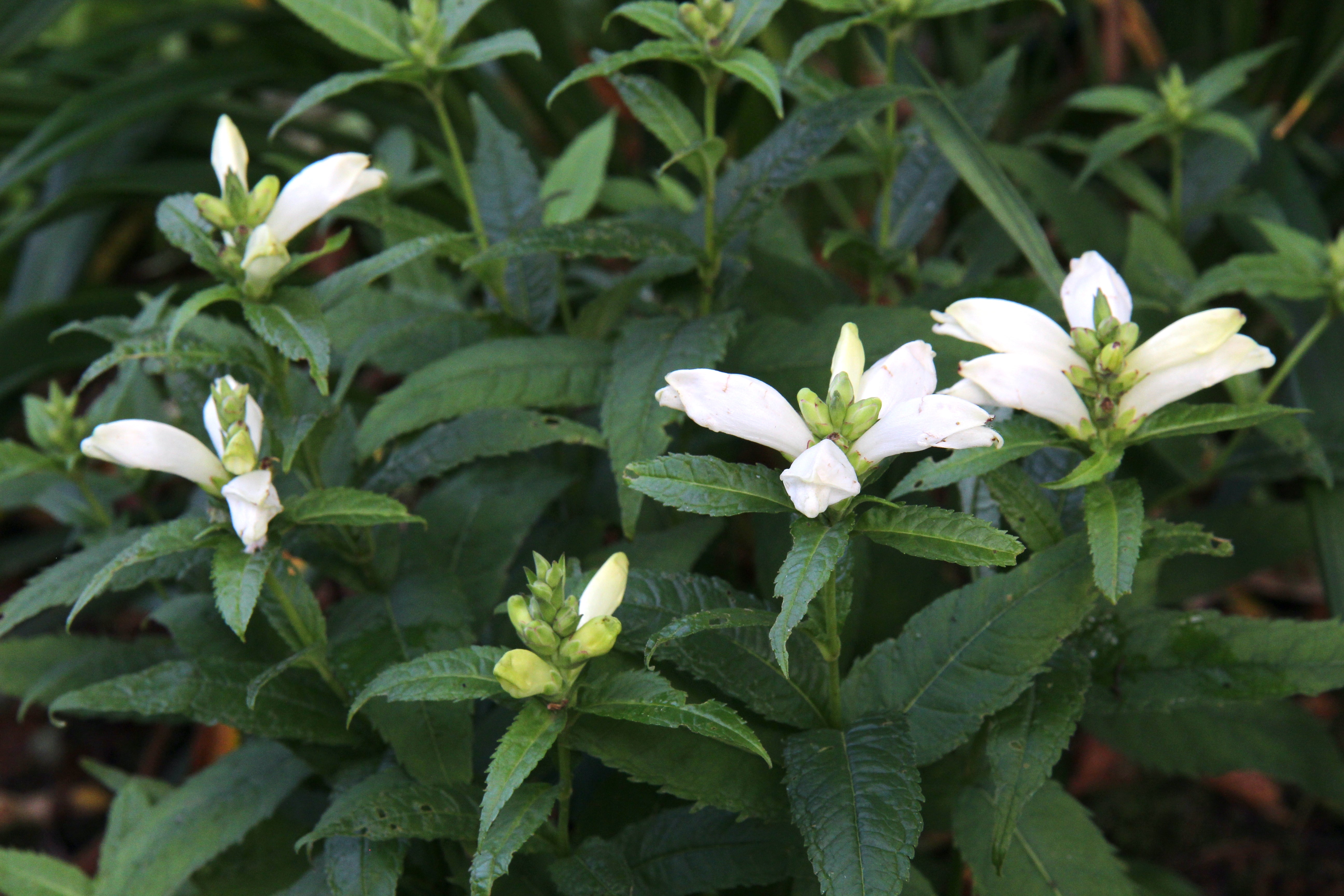Chelone obliqua var. alba
Approx. 0.5 litre pot
About this cultivar:
Chelone obliqua var. alba is a superb garden specimen and quite different than the more commonly grown pink-flowered Chelone lyonii or obliqua. The rhizome producing clumps produce tall stems, clothed with dark glossy green leaves and topped with white turtleheads. This is a white flowered plant that actually likes sun as well as part shade.
- Position: Full sun, partial shade
- Soil: Almost any soil, grows well in Ballyrobert
- Flowers: August, September, October
- Other features: Grows well in Ballyrobert, Bees and Butterflies
- Hardiness: Fully hardy - grows well in Ballyrobert!
- Habit: Bushy, Clump forming
- Foliage: Deciduous
- Height: 60 - 90 cm (2 - 3 ft)
- Spread: 30 - 60 cm (1 - 2 ft)
- Time to full growth: 2 to 5 years
- Plant type: Herbaceous Perennial
- Colour: White, green
-
Goes well with: Geranium and Caryoptris. Ligularia, Astilbe, Lobelia, and Iris.
About this genus:
Chelone (keh-LOW-nee) is a genus of four species of perennial herbaceous plants in the plantain family (Plantaginaceae) first described by Carl Linnaeus in 1753. Native to eastern North America, they have turtle shaped flowers, In fact the name Chelone is from the greek for Turtle-like and the common name is Turtlehead. Depending on the species or cultivar flowers vary in colour from white to red, purple or pink. The foliage is often dark green.
In the wild, they grow on the edges of streams, lakes, bogs and wet thickets. In the garden they are hardy and easy to grow. They tolerate drought but like moisture - I would even go as far to say they are bog plants. They get to about 2-3 feet in height and flower from summer to autumn. Often they are used around vegetable gardens because rabbits and deer don't like them!
As for ornamental use I think Geranium and Caryoptris make good companion plants. However with their love of moist soils, they are ideal companions for Ligularia, Astilbe, Lobelia, and Iris.








